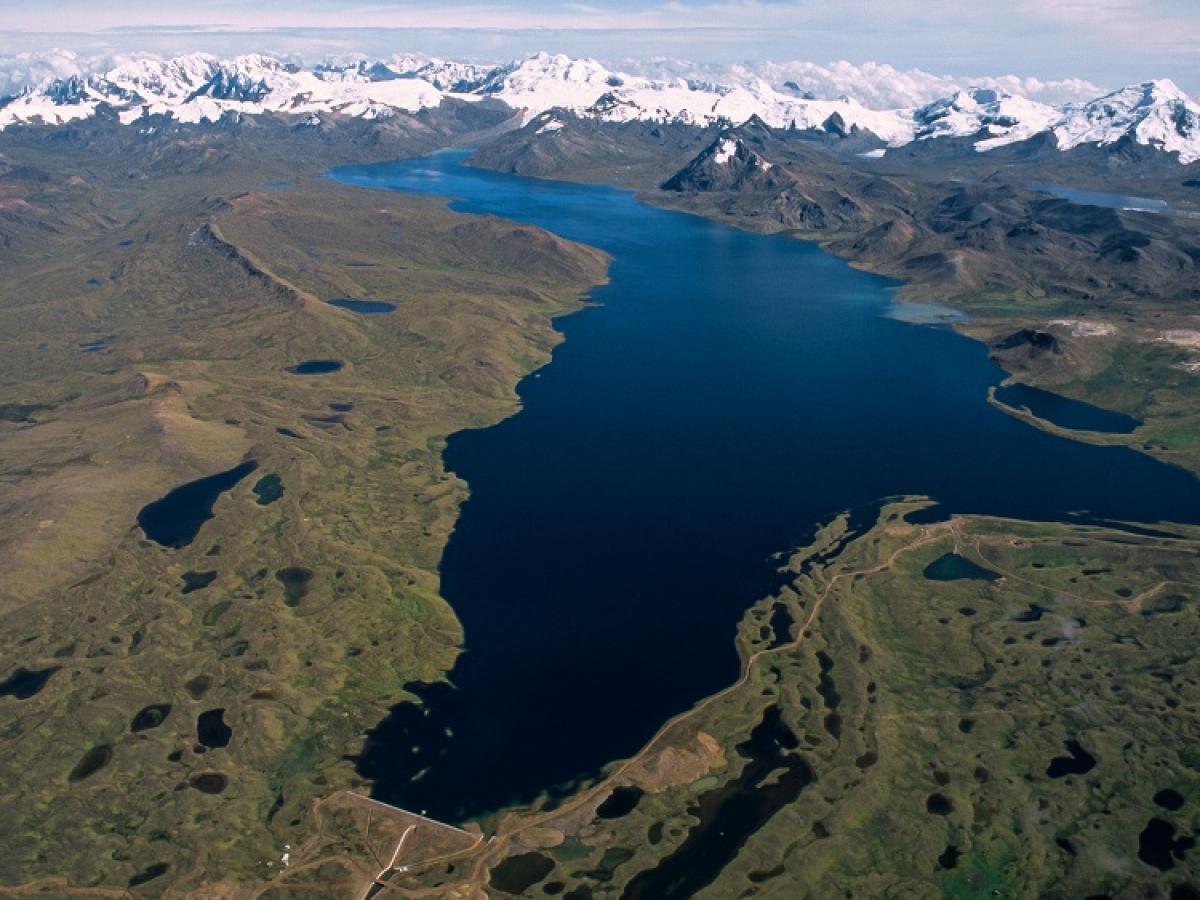
Sibinacocha Lake, Peru. Image: www.sibinacocha.org
The next steps are being taken to unlock the secrets of the universe above the southern hemisphere. University of Adelaide researchers are working with water tank manufacturer Aquamate to investigate the best way to deploy sensors to detect the highest energy gamma rays from the universe.
"We are trying to capture photons with energies well above peta electronvolts (1015 eV) - the highest energy photons - to unlock secrets of the universe," said the University of Adelaide's Dr Jose Bellido Caceres who is an astronomer in the School of Physical Sciences and is leading the project in Peru.
"Following testing in late 2021 of water tanks specially made for this purpose we are now testing lake detectors which are contained in large plastic bladders filled with water without the need for the tanks.
"The prototype lake detector that is being tested at Aquamate's site at Tonsley, South Australia. The lake detector is tested in a large tank that has been filled with water to mimic the lake."
When the gamma rays enter the atmosphere, they produce energetic secondary particles that emit Cherenkov light as they pass through water or air, producing a blue streak that can be recorded. Ground-based gamma-ray observatories can use dense arrays of water tanks spread over a large area or an array of optical telescopes to capture this Cherenkov light to measure the angle-of-arrival and energy of the gamma rays.
"The Southern Widefield Gamma-ray Observatory which is planned to be built in South America will be the first observatory in the southern hemisphere capable of surveying the sky in search of peta electronvolts gamma rays."Dr Jose Bellido Caceres
The prototype lake detector is the latest step in plans to provide a better view of the universe above the southern hemisphere.
"The Southern Widefield Gamma-ray Observatory (SWGO) which is planned to be built in South America will be the first observatory in the southern hemisphere capable of surveying the sky in search of peta electronvolts gamma rays," said Dr Bellido Caceres.
"To build the observatory we will require at least 6500 detector units to cover an area of one square kilometre. SWGO is most likely to be built above ground like previous gamma-ray observatories. If the lake detector technology proves to be reliable the observatory would be built in Lake Sibinacocha in Peru."






